For the past few weeks, I have taken this book with me back and forth from school to home and vice versa. Have you heard of this book, The Reading Strategy Book, by Jennifer Serravallo??
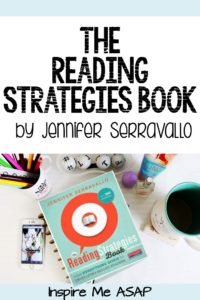
I am joining a group of other bloggers who are participating in a book study for this awesome book!
I am so excited to share what I learned from Chapter 8, Nonfiction: Main Topic(s) and Idea(s), with you!

Focus Strategy One: Notice What Repeats
Jennifer teaches that books up till Fountas and Pinnell Level J (mid second grade), books often don’t have a main idea, but rather a “main topic.” An example of this would be a nonfiction text about dogs. Facts about dogs is the topic. “Golden retrievers are known for their good swimming skills. For younger readers, asking them to identify the main idea of a text may be too challenging. Instead, ask those students to identify what repeats throughout the text.
An example that I have to share with you is from the book, Sonoran Desert Animals, by Sally Murphy. This book is a Fountas and Pinnell level I.
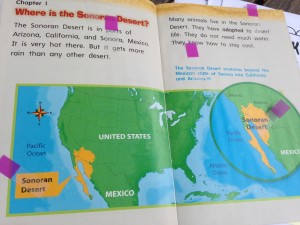
As you can see, the word that repeats throughout every page is, “Sonoran.” As students are able to determine words that repeat, then they are able to determine important words. The main topic of this book are the different animals that live in the Sonoran desert.
Students used transparent sticky notes to identify the repeated words in their books.
Some prompts for this strategy include:
*As you are reading, pay attention to what repeats on each page.
*Did you notice any words that repeat on every page of the text?
*Tell me the main topic.
*Find examples of what’s the same.
Another strategy I love is 9.18- Shrink-a-Text with a Partner
During this strategy, students read a chunk of text together and decide what the main idea of the text is. The trick is to SHRINK everything you just read into one sentence….not a run-on sentence, either! :) Students are encourage to support their ideas with examples from the text.
As I was reading this strategy, I got the idea to use a visual, to show the process of take something BIG to something SMALLER. I dug out my Alphabet Nesting Boxes for this lesson. If you ever used nesting dolls or boxes, you know that it starts off with one really big doll/box and then has numerous different dolls/boxes that can fit inside.
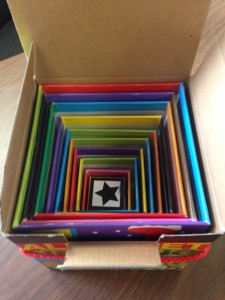
I like to use these boxes for teaching my writers about selecting “tiny topics,” so I thought it would be great to use the same tool for a reading strategy! I took out one large box (the letter was not important for this lesson) and then a smaller box that fit inside that large box.
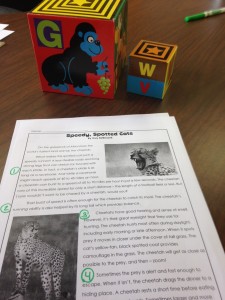
As we read, I modeled how we could take one passage, chunk of the text, or a paragraph, and “shrink it.” For example, if the text talked about Speedy, Spotted Cats, then an example of “shrinking it” would be, “Cheetahs are the fastest land animal.”
Below is a picture of the graphic organizer that I created to go along with this strategy. You can see how students read a section, and then “shrink it,” by writing just one sentence.
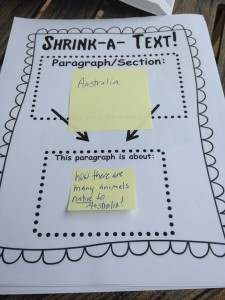
The section is about Australia. The section, in ONE sentence or less, is “how there are many different animals native to Australia.”
Notice how I had my students use a LARGE sticky note for the paragraph and then a SMALL sticky note, to really represent a VISUAL for **SHRINKING** of the text. :)
This strategy works best with NF texts that are a level M or higher.
Some prompts include:
*Read a chunk of the text.
*Determine the main idea.
*Use just one sentence to determine the main idea.
The last strategy I am sharing is 8.16, which is “What? and So What?”
Jennifer explains this strategy by saying that a main idea is more than just a topic. Your students have to know what the text is about (the topic), and then be able to say “so what” about it. The “so what” part can be the idea or perspective that the author brings to the topic.
This strategy is best for students who are at Fountas and Pinnell reading levels of M and above. An example of this strategy is below. We read Animals and Their Teeth and completed the graphic organizer together.
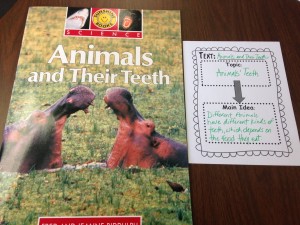
The topic is Animals’ Teeth. The main idea however, is more than just that topic. Students determined that the main idea was, “Different animals have different kinds of teeth, which depends on the food they eat.”
The students determined that the text was mostly about animals’ teeth- that is the topic. The students then learned that the author was trying to explain, or teach them, about the different types of teeth that animals have, depending on if they are a carnivore, omnivore, or herbivore.

The next example is with a book called Reptiles. It is a NF book that is higher than a level M. Students determined that the topic was “Ten deadly snakes.” They were VERY interested, a wee bit scared!, of this topic! We then read a few pages and determined that the main idea was “Most snakes are harmless, however don’t mess with the deadly ones!” The author wants us to know the different types of deadly snakes, and to leave them alone.
The graphic organizers that I created to accompany these strategies are available to download for freebie. Please click on the button below.
Colleen kicked off our book study with and awesome, must-read post on Goal 1: Literacy Loving Gals
Just in case you haven’t already figured it out, I highly recommend this book for any primary teacher who teaches ELA!
Click on the link below to check out this book on Amazon. (The link below is a link to my Amazon Affiliate Page.)
If anyone has read this book, I would love to hear from you!
What were your favorite lessons?

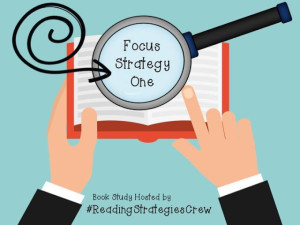
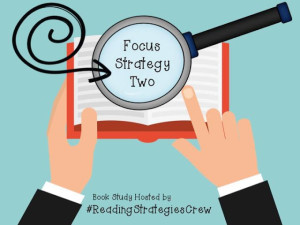
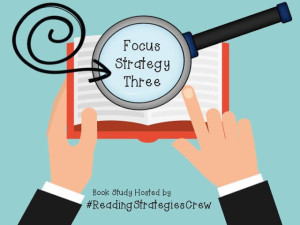
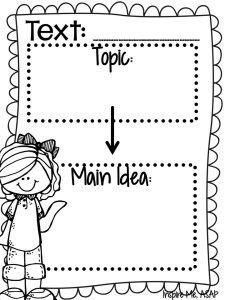
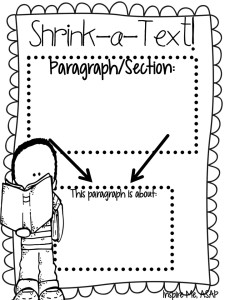





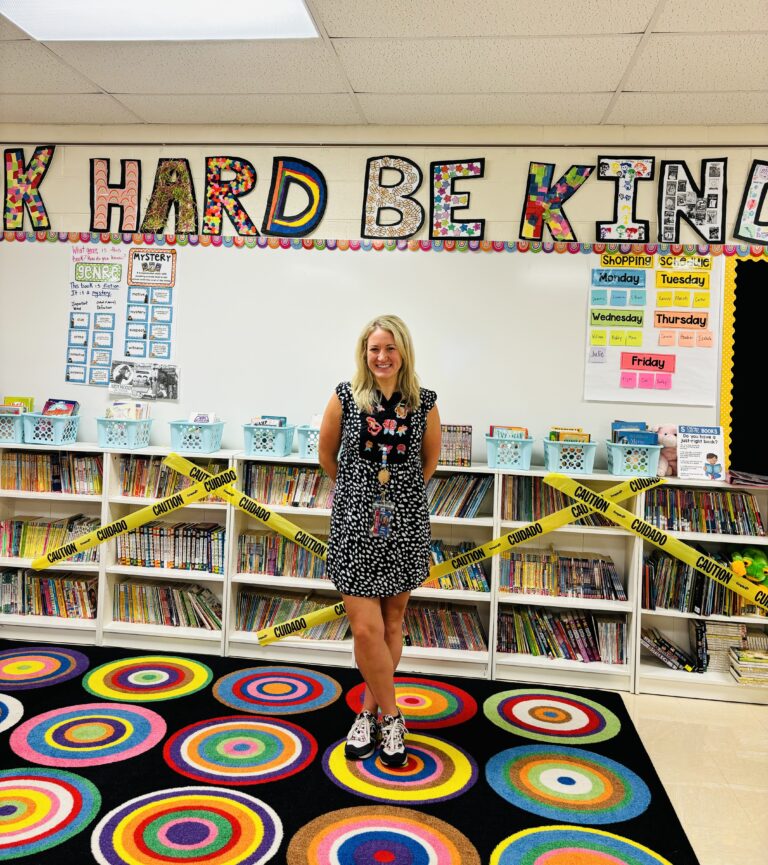



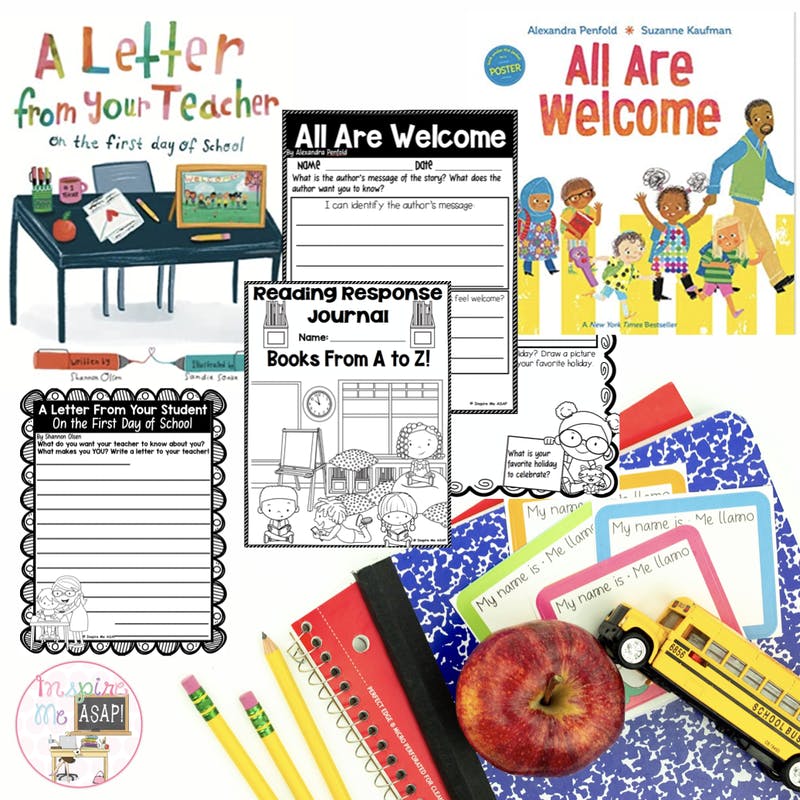
7 Responses
I HAVE THE READING STRATEGIES AS WELL AND AM LOVING IT! SO GLAD I FOUND YOUR BLOG!!!
im a new guided reading teacher! Any info for new guided reading teachers?
Hello Andrea, Check out Dr. Shanahan’s blog and Choice Literacy. They are wonderful resources. Also, check out jennifer’s books! :)
Would you please provide me the link for those blogs? I just ordered that book online and I want to learn everything about it! Thanks!!!
My colleagues and I started using this book this year and absolutely love it! Highly recommend!!!
So clear and easy to understand! Thank you!
I love this book – and I teach 6th grade! It is awesome for my lower break out groups to start lower and get them up to level. Simplicity. Also check out the Grammar Keepers book -it too is wonderful!